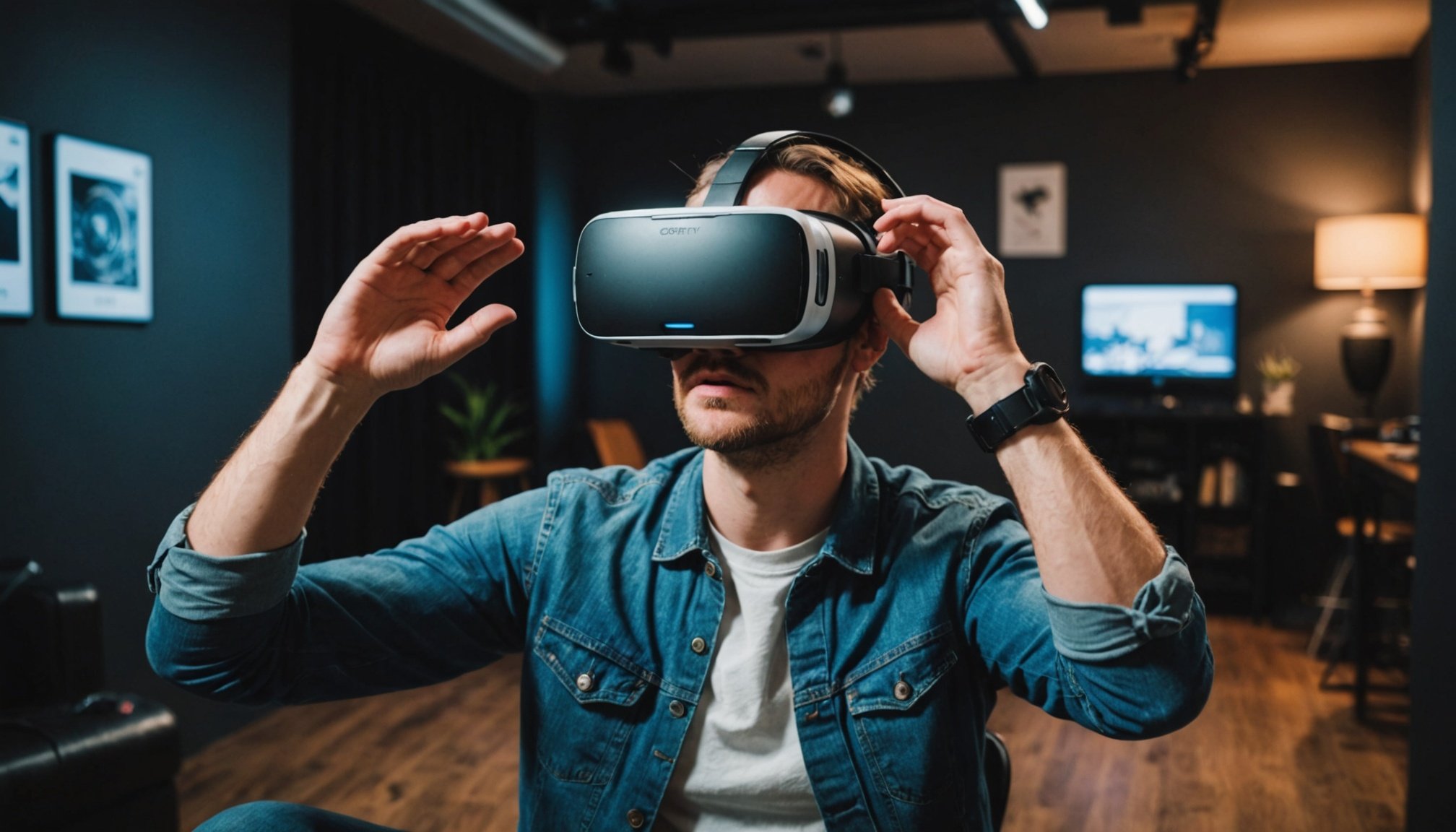Overview of Virtual Reality Exposure Therapy
Virtual Reality Exposure Therapy (VRET) is a modern therapeutic approach designed to assist individuals in overcoming phobias through simulated experiences. Unlike traditional exposure therapy, which involves real-life exposures, VRET immerses patients in a controlled digital environment where they can safely confront their fears. This approach relies heavily on immersive technology—headsets, motion sensors, and interactive software—that create realistic scenarios tailored to the individual’s needs.
Key principles of VRET involve gradual exposure to phobia-inducing stimuli, allowing patients to gain mastery over their anxieties in a systematic and progressive manner. Therapists guide participants through these virtual situations, adjusting the intensity as required while monitoring the patient’s responses.
Additional reading : Transforming stroke rehabilitation: how haptic technology accelerates patient recovery
What sets VRET apart from traditional methods is its highly customizable nature. This allows flexibility and specificity in therapy, honing in on unique phobic triggers without the safety concerns present in real-world exposure. With the use of advanced VR technology, participants engage in lifelike scenarios, enhancing emotional engagement and speeding up the therapeutic process. VRET offers a promising synthesis of safety, accessibility, and effectiveness in phobia treatment, appealing to diverse patient groups seeking refuge from intense fears.
Specific Phobias Addressed by VRET
Virtual Reality Exposure Therapy (VRET) offers a valuable tool for tackling specific phobias with precision. These phobias often include common fears such as the fear of heights, spiders, or flying. By creating highly realistic yet controlled environments, VRET helps individuals confront these anxieties methodically and safely.
This might interest you : Revamping cityscapes: how vertical farming is revolutionizing sustainable food supply and reducing carbon footprints
Phobia treatment via VRET is often tailored to meet the unique responses of each patient. This ensures that therapy progresses at a comfortable pace, addressing the subtle nuances of individual anxiety disorders. Through these customized environments, patients gain confidence over time, enabling them to face previously overwhelming fears.
Case studies frequently highlight the success of VRET in addressing specific phobias. For instance, a notable case involved a participant overcoming acrophobia, or the fear of heights, by incrementally facing elevated virtual spaces while regularly guided by a therapist. Such case studies underscore VRET’s potential to transform the landscape of phobia treatment.
Ultimately, VRET not only equips individuals to manage their fears more effectively but also reshapes the therapeutic approach to anxiety disorders, offering an innovative and promising pathway towards recovery.
Evidence of Effectiveness
The effectiveness of VRET has been demonstrated through various research studies, showcasing its significant impact on treating phobias. Clinical outcomes have frequently shown that Virtual Reality Exposure Therapy can effectively reduce anxiety and fear in patients. Research studies comparing VRET outcomes to traditional therapies frequently reveal that participants show faster improvement and higher retention rates with VRET. This can be attributed to the immersive and engaging nature of virtual environments, which mimic real-life scenarios more closely than traditional settings.
Longitudinal studies have been pivotal in establishing the lasting effects of VRET. These studies often track patients over extended periods and confirm sustained reductions in anxiety levels. Additionally, follow-up results typically suggest that individuals who undergo VRET are less likely to experience relapses in phobia symptoms compared to those treated with conventional methods.
VRET’s ability to offer repeated safe and controlled exposure contributes to its clinical effectiveness, making it a promising tool for treating a wide range of anxiety disorders. This evidence places VRET as a compelling alternative for individuals seeking innovative therapeutic options.
Benefits of Virtual Reality Exposure Therapy
Virtual Reality Exposure Therapy (VRET) offers a range of benefits, making it a compelling choice for individuals dealing with phobias. Firstly, the safe environment provided by virtual settings allows patients to confront their fears without the immediate dangers real-world exposures might pose. This safety net helps individuals progress at a suitable pace, reinforcing emotional engagement without overwhelming them.
The immersive experiences designed in VRET sessions significantly enhance emotional and psychological responses. By interacting with realistic virtual environments, patients often experience deeper engagement, which can lead to faster and more effective mental health improvements. This immersive quality supports the effective desensitization of phobias.
Moreover, VRET’s accessibility offers advantages over some traditional methods. Many clinics now provide online or remote sessions, bringing therapy to individuals regardless of their geographical location. This adaptability ensures that a wider array of patients, including those with mobility limitations, can benefit from VRET. These therapeutic advantages make VRET an appealing and modern approach for those looking to manage their mental health issues effectively, providing a bridge to relief and recovery.
Potential Risks and Considerations
While Virtual Reality Exposure Therapy (VRET) offers numerous benefits, it also presents potential risks and considerations. Some individuals might experience psychological reactions during VRET sessions, including increased anxiety or discomfort when confronting phobic stimuli. This underscores the importance of having proper guidance and therapist involvement throughout the therapy process to manage and mitigate these reactions effectively.
Ensuring the presence of a qualified therapist is essential to monitor the patient’s emotional state and adjust the session intensity accordingly. Therapists are trained to provide the necessary support and make real-time changes to the virtual environment, ensuring that the exposure remains within a safe and therapeutic range.
For individuals with severe anxiety or other mental conditions, special considerations are needed before starting VRET. A comprehensive assessment of the patient’s mental health is critical to determine if VRET is a suitable option. In some cases, traditional therapies or a combination of therapeutic approaches may be more appropriate. The therapist’s role is key in evaluating the patient’s readiness and ensuring that VRET offers more benefits than potential drawbacks, enabling a positive and productive therapeutic experience.
How to Access Virtual Reality Exposure Therapy
Accessing Virtual Reality Exposure Therapy (VRET) can be straightforward with the right steps. Begin by seeking certified VRET providers. This often involves searching for clinics specializing in digital mental health treatments or contacting professional organizations for recommendations.
Cost is a significant factor in accessing VRET services. Therapy sessions may vary in price depending on location and provider expertise. Therefore, it’s wise to inquire about insurance coverage. Some plans may cover a portion of VRET if classified as a psychotherapy service.
Remote options have expanded the reach of VRET. Many clinics offer online or virtual sessions, which connect patients with therapists without the constraints of geographical distance. This adaptability ensures that individuals who may be isolated or have mobility issues can still partake in therapy.
Potential patients should verify the credentials of the therapists and the technology standards used in sessions. As VRET continues to evolve, exploring different avenues for access and understanding the associated costs will empower individuals to make informed decisions about their mental health care.
Comparative Analysis with Traditional Therapies
Virtual Reality Exposure Therapy (VRET) offers distinct advantages over traditional exposure therapy. Unlike conventional methods that necessitate real-world interactions with phobic stimuli, VRET creates virtual environments that are safer and more controlled. This technology-driven approach allows individuals to confront fears with reduced risk, fostering higher levels of engagement and compliance.
Key differences also appear in the adaptability and precision of treatment. VRET is highly customizable, enabling therapists to tailor sessions according to the specific needs and progression of each patient. This customization is particularly beneficial for those with intense or unique phobic triggers, where precision is paramount.
Traditional exposure therapy might better suit patients comfortable with gradual and direct real-world exposure. However, VRET can play a critical role when safety, controlled environments, and patient convenience are priorities. Additionally, VRET is often the therapy of choice for individuals who benefit from immediate accessibility, including those with mobility constraints.
Case scenarios frequently support VRET’s application in treating phobias such as fear of heights or public speaking. While traditional methods remain effective, VRET’s technological edge enhances its appeal as a modern therapeutic option.
Conclusion and Future Directions
The future of Virtual Reality Exposure Therapy (VRET) appears promising, with ongoing advancements in technology. These innovations promise to enhance both effectiveness and accessibility, allowing VRET to play a more central role in mainstream therapeutic practices. As VR technologies continue to progress, the immersive experiences offered by VRET will become even more sophisticated, providing environments that closely mimic real-life scenarios with impressive accuracy.
Future advancements may include more personalized therapeutic environments through AI and machine learning, allowing even finer customization of VRET sessions to cater to individual phobia responses. It’s anticipated that this progress will enable VRET to tackle a broader range of phobias and anxiety disorders with increasing precision.
There’s also growing potential for VRET to achieve broader acceptance in therapy, influenced by its ability to offer safe and controlled settings. This is especially relevant as mental health care moves towards more inclusive and tech-savvy solutions. With substantial investments in research, the outlook for clinical applications of VRET is encouraging, promising to reshape anxiety disorder treatments in the coming years.






